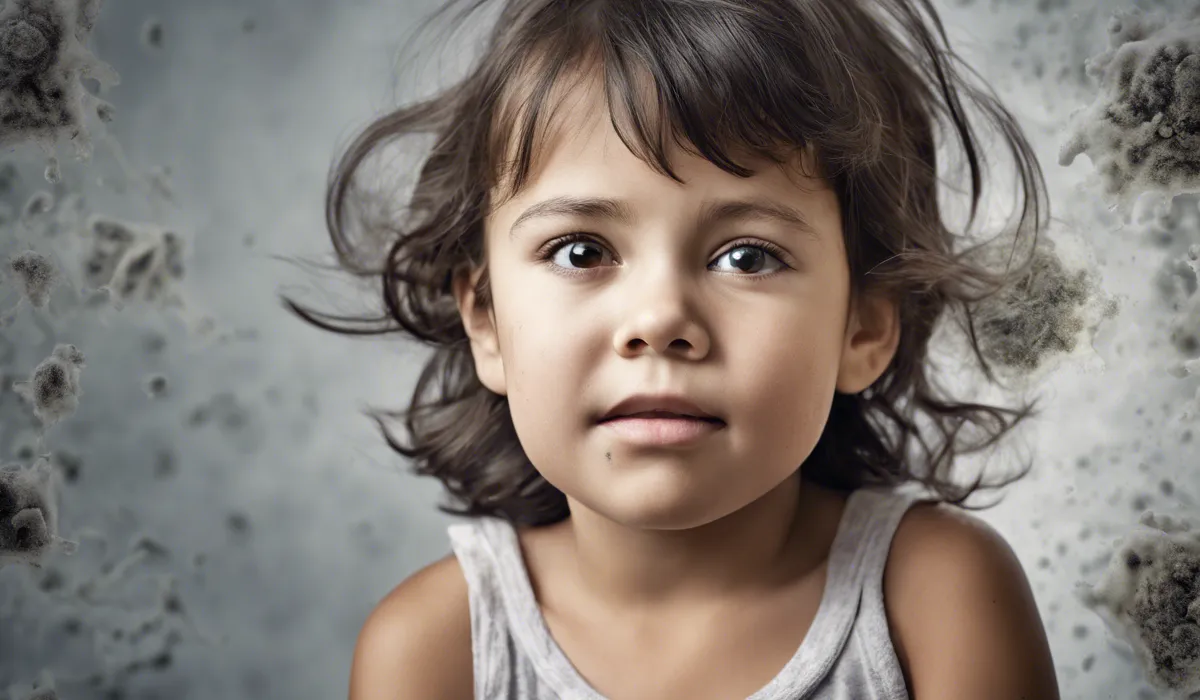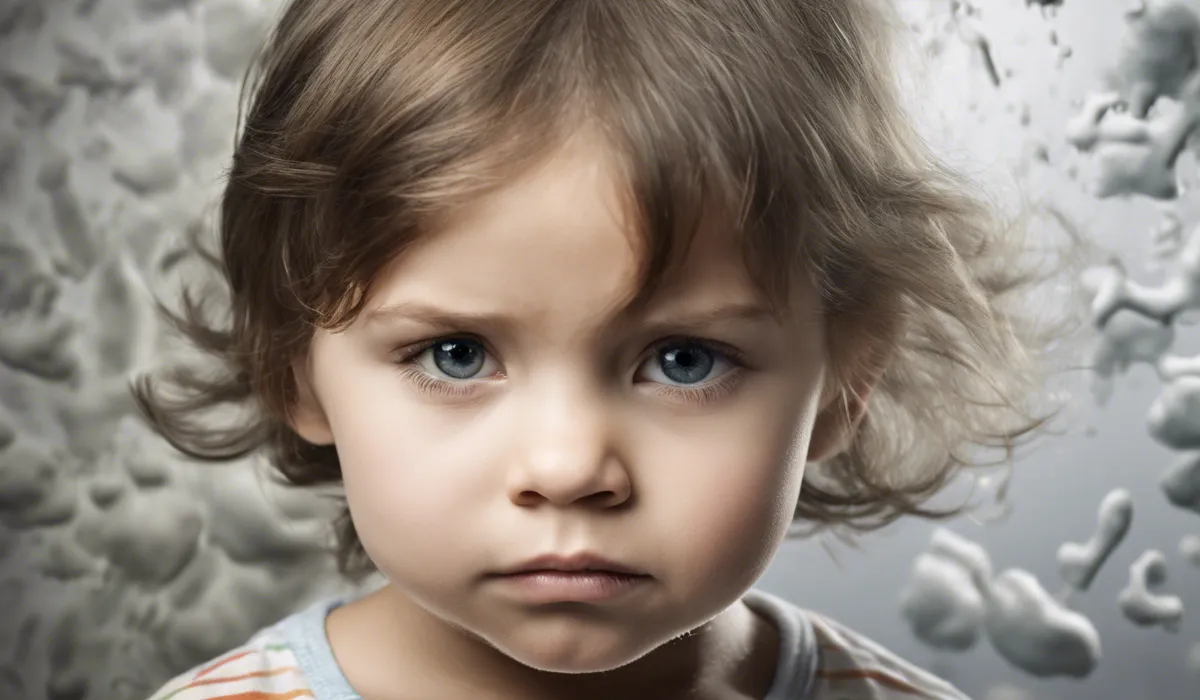Yes, mold exposure can potentially affect a child’s behavior. It may lead to irritability, difficulty concentrating, and behavioral changes, particularly if the child has allergies or asthma exacerbated by mold. Professional evaluation is advisable if mold exposure is suspected.
Mold and Its Potential Health Effects on Children

What Is Mold?
Mold is a type of fungus that can grow indoors and outdoors. It thrives in warm, damp, and humid conditions, spreading and reproducing by making spores.
Mold can grow on almost any surface, including wood, paper, carpet, food, and insulation. While it plays a crucial role in nature by breaking down dead organic material, it can cause health issues when it grows unchecked in our homes.
Conditions for Mold Growth
Mold requires moisture, warmth, and food to grow. It often appears in areas with high humidity levels, such as bathrooms, kitchens, basements, or areas that have experienced flooding or leaks.
Poor ventilation can also contribute to higher humidity levels and promote mold growth.
Common Indoor Molds
Common types of indoor molds include Cladosporium, Penicillium, Aspergillus, and Stachybotrys chartarum, also known as black mold.
Each type can pose different health risks, and some are more likely to produce toxins known as mycotoxins.
Health Impact on Children
Children are particularly sensitive to mold because their immune systems and bodies are still developing.
Exposure to mold can lead to various health issues, which can be more severe in children with underlying health conditions.
Short-Term Health Effects in Children
Short-term effects of mold exposure in children can include coughing, sneezing, throat irritation, nasal stuffiness, and eye irritation. Some children may experience skin irritation upon contact with mold.
Respiratory Issues from Mold
Allergies and asthma can be triggered or worsened by mold exposure. Children with pre-existing respiratory conditions are at a higher risk of having symptoms like wheezing, difficulty breathing, and chest tightness when exposed to mold.
Relationship Between Mold Exposure and Child Behavior

Mold Exposure and Neurological Studies
Research has indicated that mold exposure can potentially have neurological effects on children.
Some studies suggest that prolonged exposure to mold may be associated with cognitive impairments, including memory loss and concentration difficulties.
Cognitive Development Impact
Children’s brains are highly sensitive to environmental toxins. Exposure to mold during critical periods of brain development could potentially lead to long-term cognitive challenges and developmental delays.
Behavioral Changes in Children
Some children who are exposed to mold may exhibit behavioral changes such as irritability, aggressiveness, or hyperactivity.
While these behaviors can have many causes, it is important to consider environmental factors like mold exposure when assessing a child’s behavior.
Environmental Stressors
The presence of mold in a living environment can create psychological stressors for children.
Anxiety and stress can arise from health concerns and the disruption of a child’s routine due to mold remediation efforts.
Mold as a Trigger for Disorders
There is growing interest in the possibility that mold exposure may act as a trigger for certain behavioral disorders in children, such as attention-deficit/hyperactivity disorder (ADHD). However, more research is needed to understand these potential links fully.
Strategies for Protecting Children from Mold and Its Effects

Mold Prevention Tips
Preventing mold growth is key to protecting children’s health. Parents and schools should ensure good air circulation, promptly repair any leaks, and clean and dry any damp areas within 24-48 hours to prevent mold from taking hold.
Importance of Home Inspections
Regular home inspections can help identify potential mold problems before they become severe. Look out for water stains, musty odors, and any signs of moisture issues.
Remediation Steps
If mold is found in the home, it’s important to take immediate action. Professional mold remediation involves isolating the contaminated area, removing the mold, and addressing the moisture source.
Controlling Humidity and Ventilation
Keeping indoor humidity levels between 30-50% can significantly reduce the risk of mold growth.
Use dehumidifiers and ensure that your home is well-ventilated, especially in areas like the bathroom and kitchen.
Benefits of a Mold-Free Environment
A mold-free environment can lead to better overall health and behavior in children. Without the irritants and allergens that mold produces, children can have fewer respiratory issues and enjoy a more comfortable and healthier living space.
FAQs About Mold’s Impact on Child Behavior
Can mold exposure lead to behavioral changes in children?
Yes, mold exposure can lead to behavioral changes such as irritability and difficulty concentrating in children.
Is a child’s irritability linked to mold exposure?
Irritability in children can be linked to mold exposure, especially if they have allergies or asthma that mold can exacerbate.
Should I get a professional evaluation for my child if I suspect mold exposure?
Yes, if you suspect mold exposure is affecting your child’s behavior, a professional evaluation is advisable.
Can mold exposure affect a child’s ability to concentrate?
Mold exposure can potentially affect a child’s ability to concentrate, especially if they have pre-existing conditions like allergies or asthma.
What behavioral changes might indicate mold exposure in a child?
Behavioral changes that might indicate mold exposure in a child include increased irritability, difficulty concentrating, and a potential increase in asthma or allergy symptoms.
Final Thoughts
Mold exposure can influence a child’s behavior, potentially leading to irritability, concentration difficulties, and overall behavioral changes, especially in children with mold-related allergies or asthma.
It is important to seek professional evaluation if mold exposure is a concern, to ensure the child’s health and well-being.
